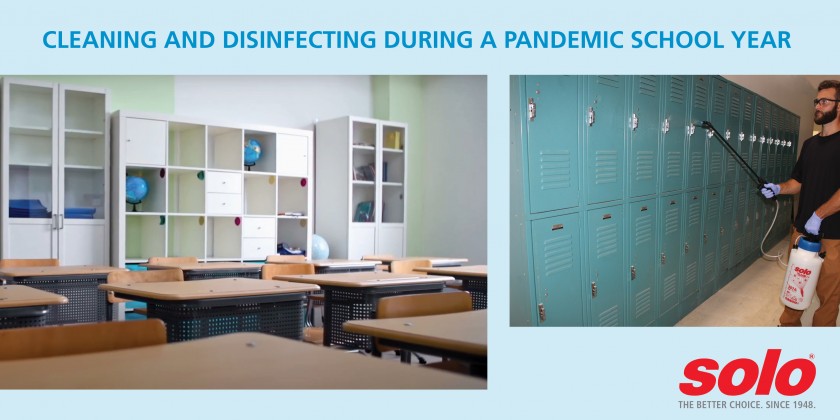
Another pandemic school year and a lot has changed. While some aspects of reopening schools have improved, schools are still struggling to reopen schools safely.
2021 Changes
The two most notable changes in 2021 relating to Covid-19 are (1) the vaccines and (2) the CDC’s updated cleaning and disinfection guidelines. First, 2021 saw vaccines become available and have made in-person learning a real and safe possibility. Vaccines have made reopening safer, but the rise of the Delta variant has complicated an improving situation. The Delta variant, which spreads faster and affects the young more, has caused some states to reinstate mask mandates.
The second change, the CDC’s relaxed guidelines, has also impacted schools’ bottom lines. Relaxed cleaning and disinfecting standards have made maintaining healthy schools easier and less expensive.
Due to a lack of understanding of Covid-19, excessive disinfection was a common practice to reduce the spread of the virus. Last school year, schools were expected to clean and disinfect classrooms, especially high-touch areas, multiple times a day. This expectation was both expensive and difficult to maintain. One, schools had limited budgets. Second, schools were understaffed, where only a small custodial staff was sufficient pre-pandemic. As a result, schools suddenly needed more staff to clean and disinfect classrooms multiple times throughout the day.
To meet the CDC’s standards, schools turned to expensive, new spraying technologies. The shift to more expensive spraying technology was common, and the rise of excessive spraying came with criticism 1. However, the CDC’s new standards made excessive spraying and expensive spraying technology unnecessary. Despite these changes,
Plan
Routine cleaning is still a critical part of maintaining a healthy facility. To save time and money and ensure safety, facilities should plan how they will clean a facility. Part of planning includes:
1) Determining where to clean in a facility
2) What chemicals and equipment to use
3) Ensuring cleaning staff understand how to use products
4) Determining what type of PPE is required to handle chemicals
Cleaning is sufficient
One of the biggest misconceptions around cleaning and disinfection last year was frequent, indiscriminate disinfection. The CDC’s guidelines were clarified. Cleaning high-touch surfaces once per day is sufficient.
Disinfect only when necessary
Cleaning is the best way to maintain a healthy facility, but disinfection is sometimes necessary. Compared to last year, where disinfection was a daily practice, this year, the CDC only recommends disinfection in the following situations:
1) The facility has had someone who has tested positive for Covid-19
2) Facilities in high-transmission communities or communities with low vaccination rates
3) Infrequent use of other preventive measures, like masking
4) High-risk individuals occupy the facility
Cleaning and Disinfection Sprayer
Schools need sprayers able to clean and disinfect. Newer, more expensive sprayers are advertised for quick disinfection but ignored cleaning surfaces. Affordable, versatile sprayers can make routine cleaning and occasional disinfection effortless. Solo’s CLEANLine sprayers are optimized for cleaning and disinfection.
[1] https://www.theatlantic.com/ideas/archive/2021/04/end-hygiene-theater/618576/
